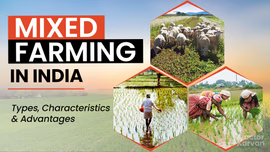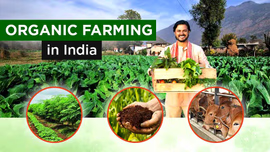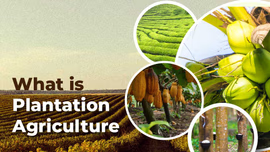Top 10 Cotton Producing States of India in 2025

Table of Contents
- Introduction
- Which Cotton Species are Cultivated in India?
- What are the Three Main Cotton Zones in India?
- Which are the Top 10 Cotton Producing States in 2025?
Introduction
Roti, kapda aur makaan! You might have often heard of these three basic necessities of life and cotton is the main source of second basic necessity, that is, cloth. Not only this, cotton production provides direct livelihood to 6 million cotton farmers and indirect employment to 40 – 50 million population of India. That is why, cotton is one of the most important fibre and commercial crop of India and due to its substantial economic significance, it is often referred to as “White Gold”.
In terms of production, India is the second largest cotton producer globally after China with a share of 24% in global food production. Further, cotton exports are an important foreign exchange earner as India is the third largest exporter in the world with a share of 5% in global cotton exports. If we talk of top 10 cotton producing states in India, then Gujarat, Maharashtra and Telangana are the three largest cotton producing states in 2025.
In terms of consumption, India Textile Industry consumes a broad spectrum of yarns and fibres. The cotton to non-cotton fibre usage ratio is around 60:40 in India compared to 30:70 ratio of the world.
Which Cotton Species are Cultivated in India?
In India all the four known cotton species are cultivated and India is the only country in the world where all the four species of cotton are cultivated on commercial scale. The four species of cotton cultivated in India are Gossypium arboreum & G.herbaceum (Asian Cotton), G.hirsutum (American Cotton) and G.barbadense (Egyptian Cotton). Of all these cotton species, G.hirsutum represents the 90% of hybrid cotton production in India.
What are the Three Main Cotton Zones in India?
There are three main cotton zones in India based on agro-ecological conditions. These zones are Northern Zone, Central Zone, and Southern Zone. These three zones consist of 10 major cotton growing states of India and the Central Zone is the largest contributor to the country’s total cotton production. See the table below:
|
Zone |
States |
Production in Lakh Bales (2023-24) |
Share in % (2023-24) |
|
Northern Zone |
Punjab, Haryana, Rajasthan |
47.60 |
14.63 |
|
Central Zone |
Gujarat, Maharashtra, Madhya Pradesh |
189.06 |
58.13 |
|
Southern Zone |
Telangana, Andhra Pradesh, Karnataka, Tamil Nadu |
81.30 |
24.99 |
Which are the Top 10 Cotton Producing States in 2025?
The total cotton production in the country, as per the 2023-24 provisional estimates, stood at 325.22 lakh bales (1 bale = 170 kg). The top three cotton producing states Gujarat, Maharashtra and Telangana contributed 65% to the overall cotton production in the 2023-24. We have provided below the top 10 cotton producing states in India in 2025.
Gujarat
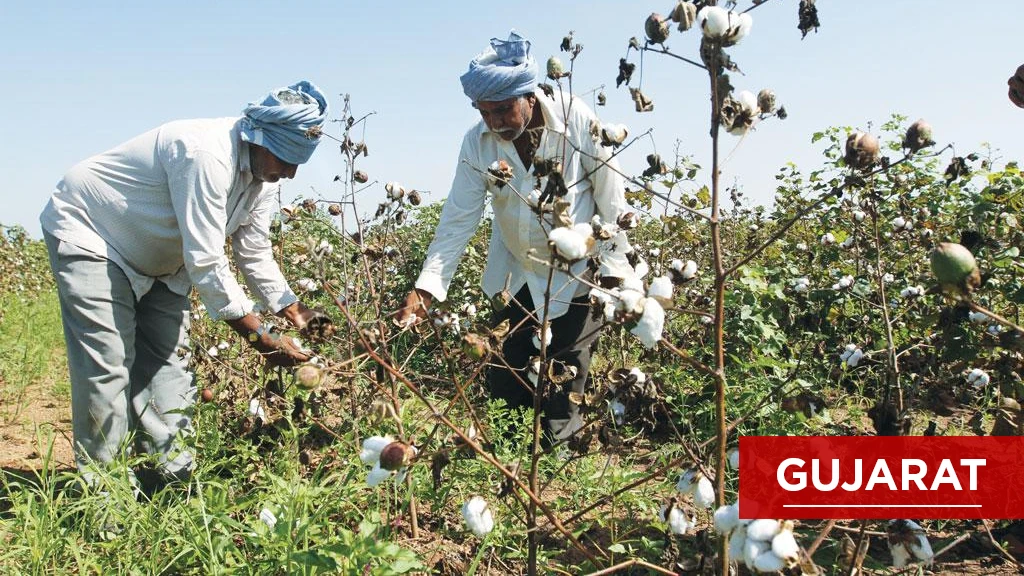
Gujarat is the largest cotton-producing state in India with a production of 90.60 lakh bales. It contributed 27.85% to the country's total cotton production.
The major cotton-producing districts in Gujarat are Amreli, Bhavnagar, Junagarh, and Rajkot.
Maharashtra
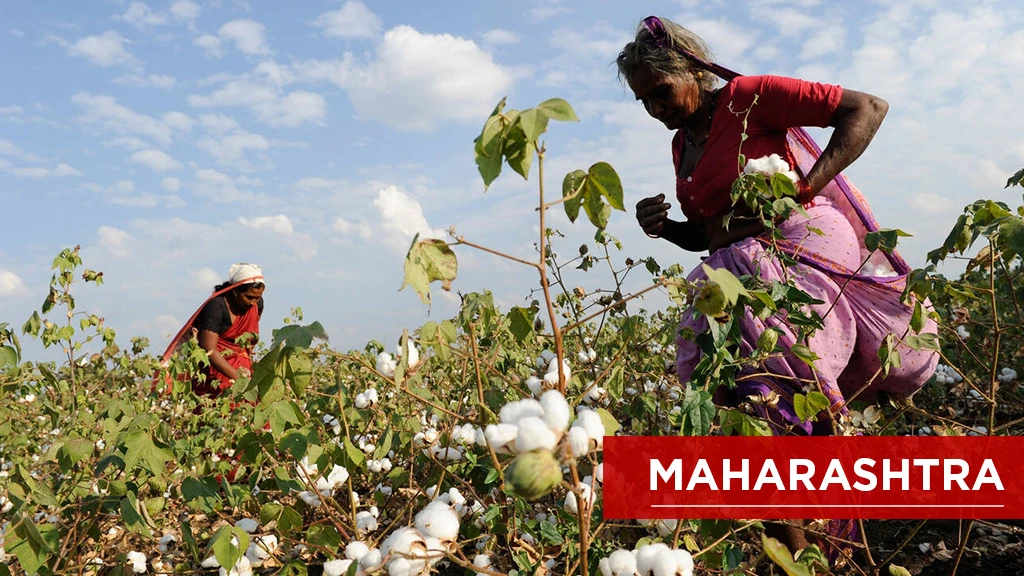
Maharashtra, with a production of 80.45 lakh bales, is the second largest producer of cotton in India. It contributed 24.73% of the total cotton production in India.
Cotton is one of the oldest-growing crops in Maharashtra, and the leading cotton-producing districts are Nagpur, Aurangabad and Jalna.
Telangana
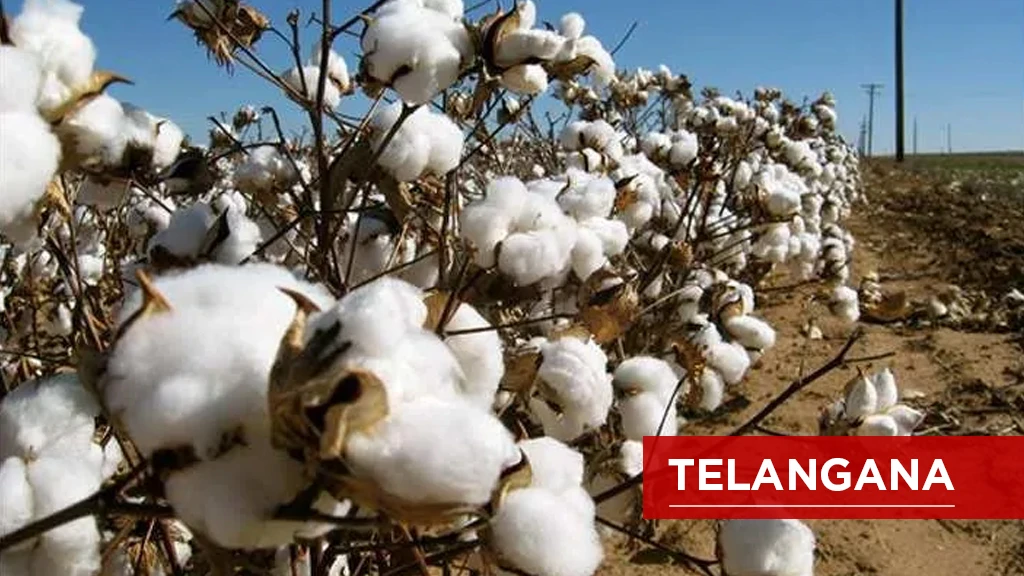
Telangana, with a share of 15.62% in the country’ total cotton production, is the third largest cotton producing state in India. It produced 50.80 lakh bales in 2023-24.
The majority of cotton is produced in the districts of Adilabad, Warangal, and Khammam.
Rajasthan
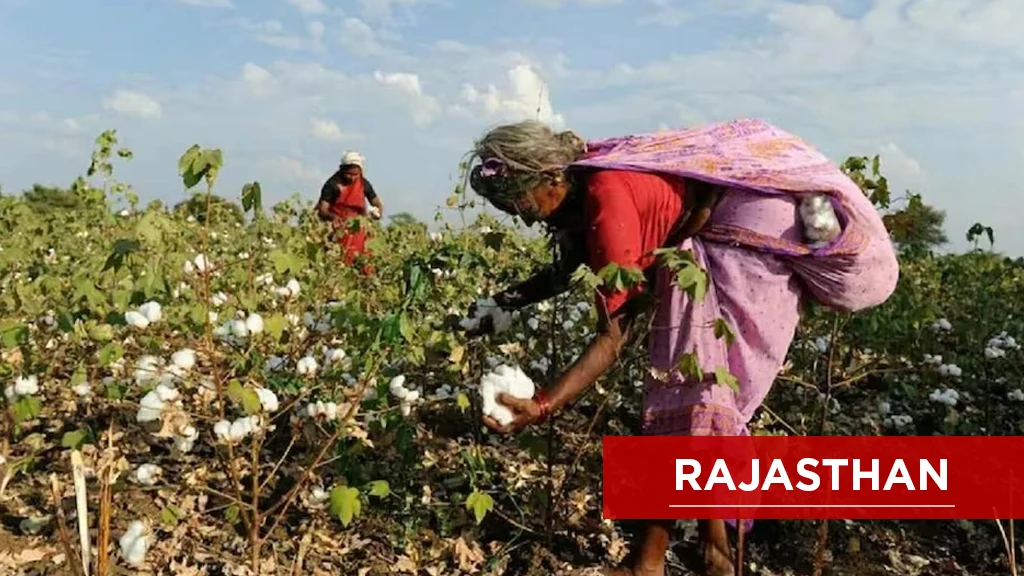
Rajasthan, with a production of 26.22 lakh bales in 2023-24, is the fourth largest cotton producing state in the country. Its share in the total production stood at around 8%
Districts like Sri Ganganagar, Hanumangarh, Alwar, and Nagaur produce most of the cotton in the state.
Karnataka
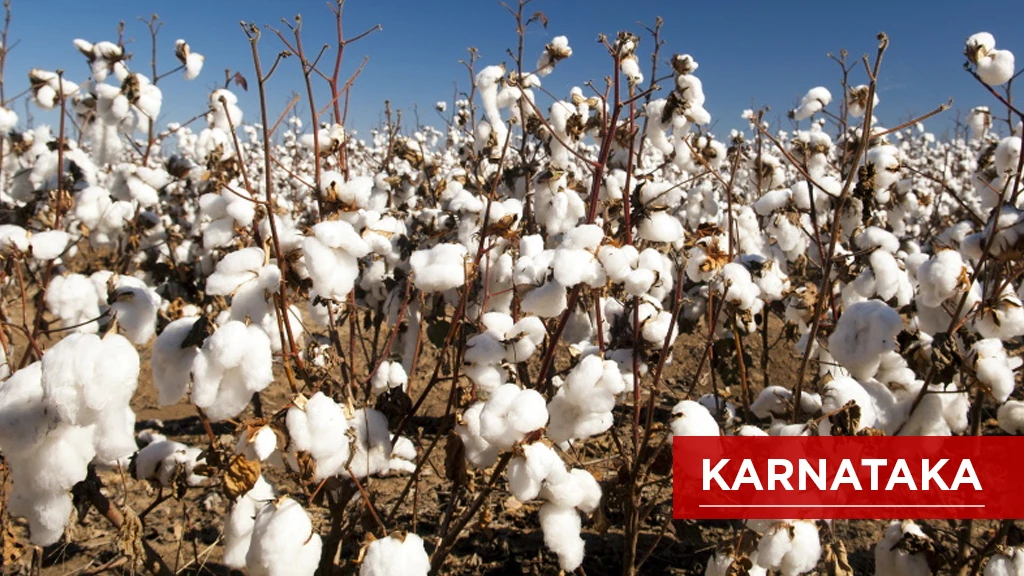
Karnataka is the fifth largest cotton producer in India. With a production of 20.47 lakh bales in 2023-24, it contributed 6.29% to the total cotton production.
The major cotton-producing districts in Karnataka are Bijapur, Dharwad, and Bellary.
Madhya Pradesh
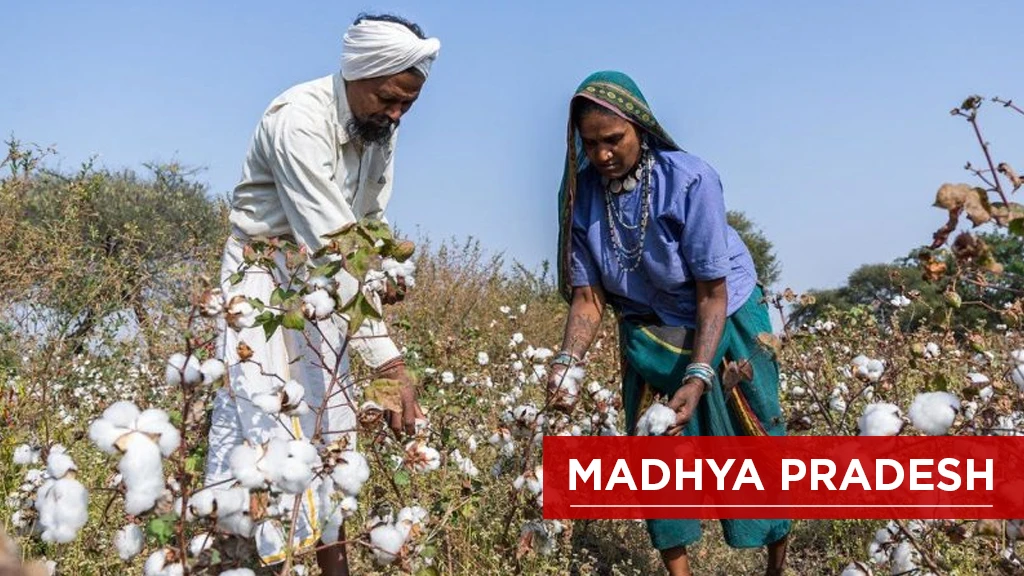
Madhya Pradesh, with a production of 18.01 lakh bales in 2023-24, is the sixth largest producer of cotton in the country. Its share in the total cotton production was 5.53%.
Cotton is mostly produced in the districts of Khargone, Mandsaur, and Ratlam in Madhya Pradesh.
Haryana
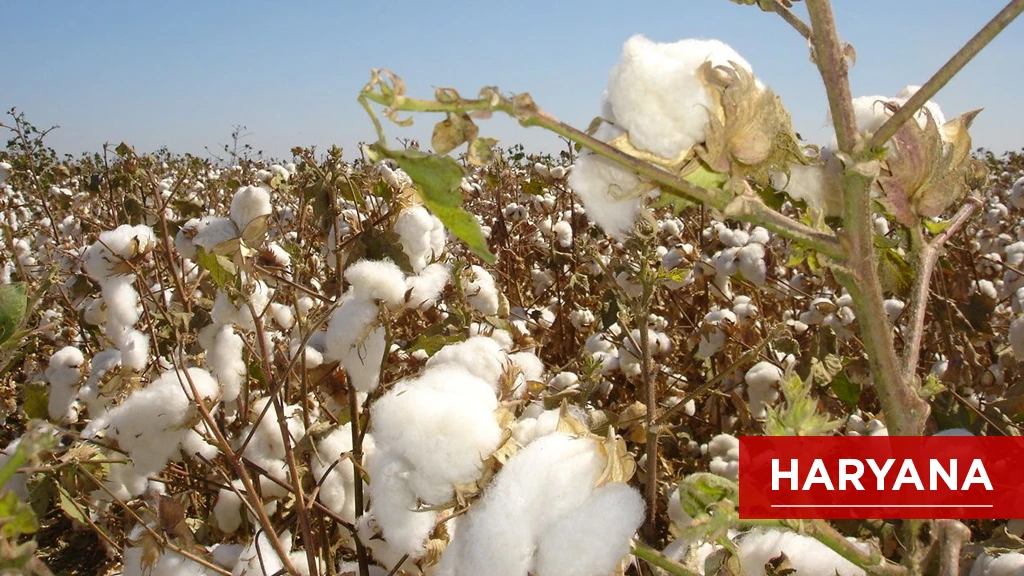
Haryana produced 15.09 lakh bales of cotton in 2023-24 and is the seventh largest cotton-producing state in the country. The state contributed around 4.63% to the total cotton production.
The major cotton-producing districts in the state are Hisar, Sirsa, and Fatehabad.
Andhra Pradesh
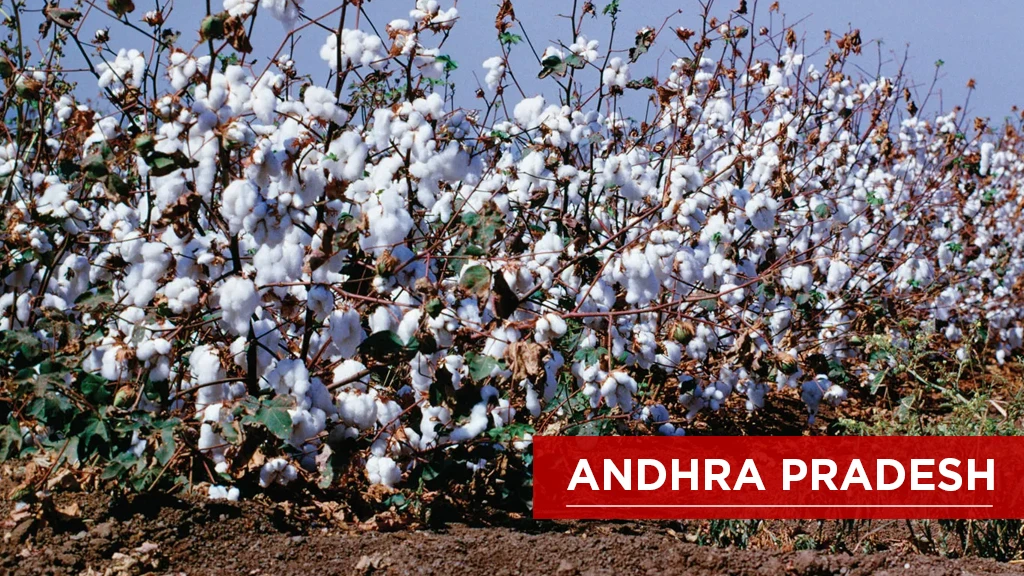
Andhra Pradesh, with a production of 7.25 lakh bales, is eighth on the list of top cotton-producing states in India. It accounts for around 2.22% of India's total cotton production.
Its major crop-producing districts in the state include Guntur, Prakasam, and Kurnool.
Odisha
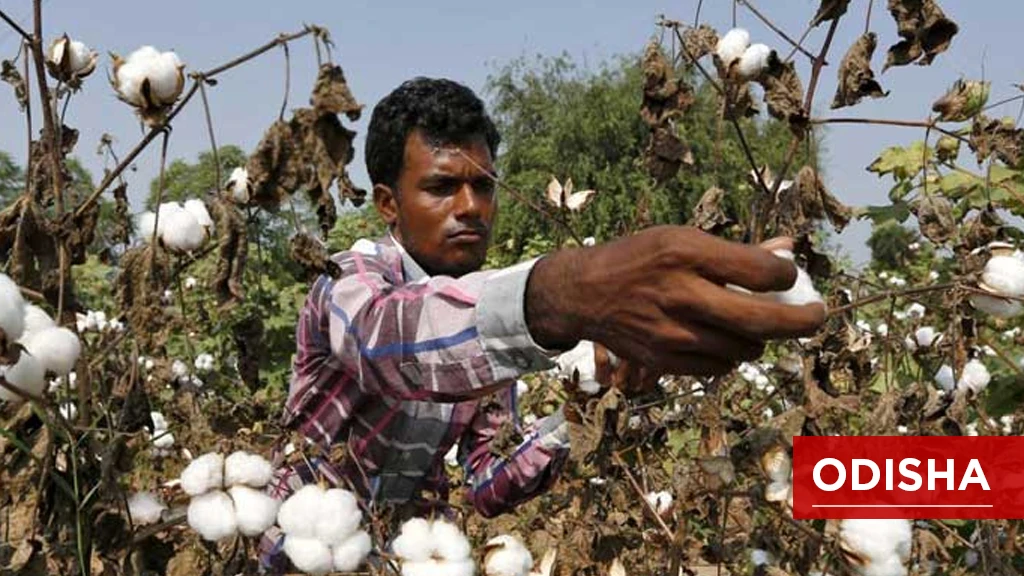
Odisha produced 7.05 lakh bales of cotton in 2023-24 and is the ninth leading producer of cotton in India. The state accounts for around 2.16% of the total cotton produced in the country.
The state's top districts for cotton production are Bolangir, Rayagada, and Kalahandi.
Punjab
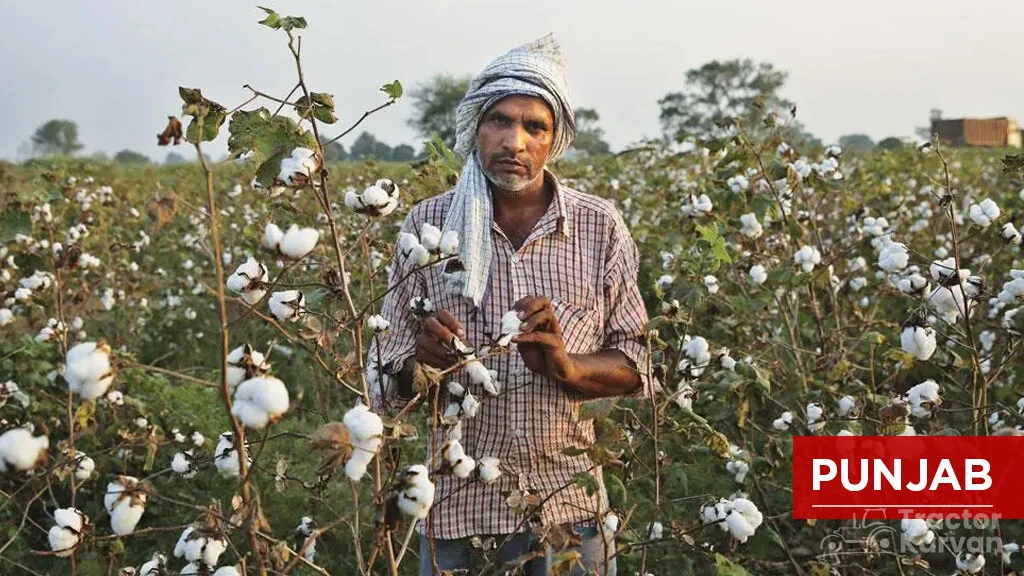
Punjab is the tenth largest producer of cotton in India. With a production of 6.29 lakh bales in 2023-24, it contributed 1.93% to the country’s total cotton production.
The top cotton-producing districts in Punjab include Bhatinda, Muktsar, and Ferozepur.
Frequently Asked Questions On Cotton Producing States in India
1. Which state is the largest producer of cotton in India?
Gujarat is the largest producer of cotton in India.
2. Which are the top 10 largest cotton producing states in India?
Gujarat, Maharashtra, Telangana, Rajasthan, Karnataka, Andhra Pradesh, Haryana, Madhya Pradesh, Punjab, Odisha are the top 10 largest cotton producing states in India.
3. What are the primary uses of cotton in India?
Cotton is primarily used in the textile industry for producing clothes.
4. Which soil is ideal for growing cotton in India?
5. Is Cotton a Khairf Crop?
Yes, Cotton is a Kharif Crop.


Related Blogs
